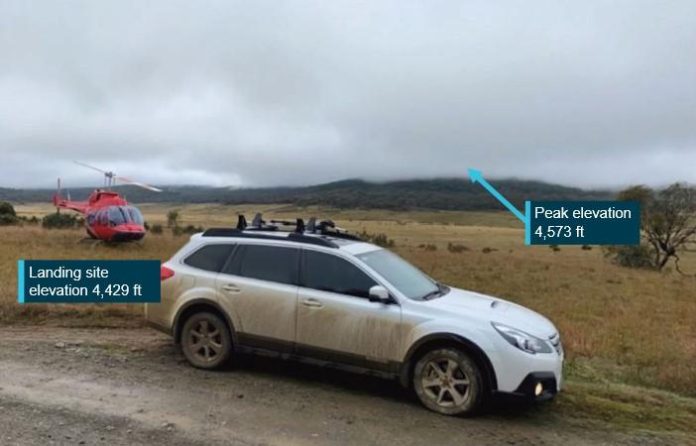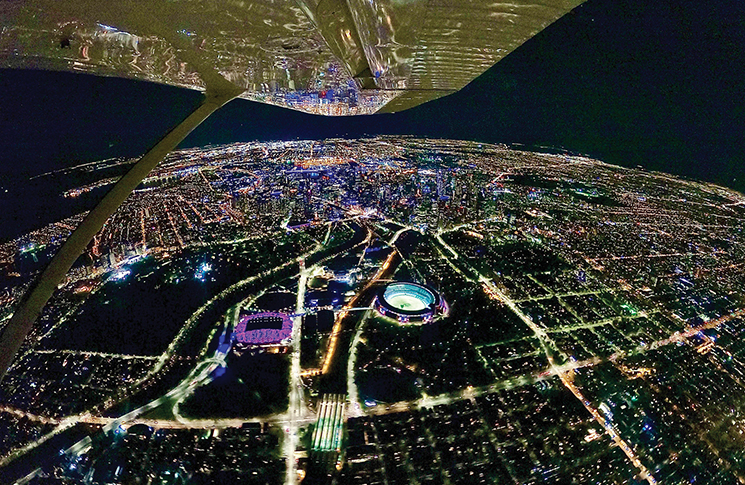VFR pilots have again been urged not to ‘push on’ in poor meteorological conditions after a fatal helicopter accident in the NSW Snowy Mountains added to the grim roster of weather-related deaths. The call was made by Australian Transport Safety Bureau (ATSB) chief commissioner Angus Mitchell, who warned weather-related accidents remain a significant causes for concern.
Mitchell was issuing a report into the death of two people in a Bell 206L-4 LongRanger helicopter after it hit terrain in Kosciuszko National Park on 3 April
The pilot of the helicopter had landed after encountering poor weather in but elected to take off again after about three hours on the ground. That decision cost the pilot and his passenger their lives after the aircraft hit terrain in overcast conditions and light rain at an elevation of about 4500 ft.
The helicopter was one of 7 taking part in flying tour from a private property at Majura near Canberra, to Mangalore, Victoria on 3 April this year.
A weather forecast indicating low cloud, rain and reduced visibility prompted 6 of the helicopters to divert or land but the pilot of the accident helicopter elected to continue.
The pilot landed in open terrain alongside a road in the Brindabella region, west of Canberra shortly before noon. He spent about three hours on the ground before taking off and flying at low level in overcast conditions with low cloud and light rain.
About 30 minutes later, the helicopter started a rapid climb before entering a steep descending turn which continued until it hit terrain. The pilot held a private licence rating but did not hold an instrument rating and the helicopter was not approved for instrument flight.
Although he initially made the right decision to land in bad weather, Mitchell said the pilot’s decision to launch again – ‘for reasons we will never fully comprehend’ – put the helicopter in a dangerous environment.
‘It is highly likely these cloud and visibility conditions resulted in the pilot experiencing a loss of visual reference and probably becoming spatially disoriented,’ he said. ‘Tragically, this led to a loss of control of the helicopter and a nonsurvivable collision with terrain.’
This is the second final report the ATSB has released this month involving a VFR pilot who likely encountered low visibility and became spatially disoriented. Other fatal accidents in which weather could be factor are under investigation.
The ATSB revealed during the ten years to 1 November 2022 it had received reports of 97 incidents in Australia involving VFR flights into Instrument Meteorological Conditions. Eleven of those had resulted in 22 deaths.
Mitchell warned a pilot was only as good as his last decision.
‘Don’t push on,’ he urged VFR pilots.
‘Pushing on into cloud and low visibility when you do not hold the appropriate rating and experience carries a significant risk of severe spatial disorientation and can affect any pilot, no matter what their level of experience.
‘Ensure you have alternate plans in case of an unexpected deterioration in the weather and make timely decisions to turn back or divert,’ he said.
‘And know your limits. As a VFR pilot, the use of a ‘personal minimums’ checklist helps to control and manage flight risks through identifying risk factors that include marginal weather conditions.’
See more about weather and forecasting at CASA’s pilot safety hub
You can also read the ATSB’s Avoidable Accidents publication Accidents involving Visual Flight Rules Pilots in instrument Meteorological Conditions.






Seems some pilots think they will be ok when put in a stress situation about getting home on the planned flight day. The statistic tells otherwise. Be wise & land where you can until conditions improve.